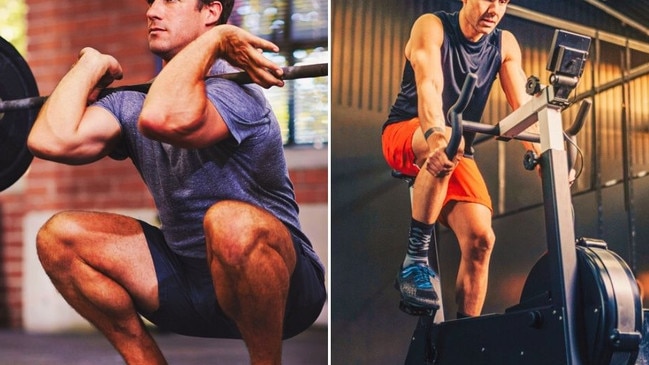Weight training gets your heart rate up, so do you need to do cardio?
It’s a question that confuses many devotees of strength training who watch their heart rate climb during weightlifting: if my heart rate is hitting the aerobic zone, do I really need to do cardio at all?

It’s a question that confuses many devotees of strength training who watch their heart rate climb during weightlifting: if my heart rate is hitting the aerobic zone for a large proportion of my workout, do I really need to do cardio at all?
It’s not uncommon during compound lifts – exercises such as squats, deadlifts, lunges, chest presses and hip thrusts – for heart rate levels to climb to 150 beats per minute and even beyond. That’s well into the aerobic zone, and sometimes weightlifters’ heart rates can even hit anaerobic levels during strength training.
Keeping in mind that the World Health Organisation recommends individuals get a minimum of 150 minutes of moderate intensity aerobic exercise a week, or 75 minutes of vigorous exercise, does strength training that raises your heart rates to these levels qualify to be added to this tally?
The answer is that it depends somewhat on your base level of fitness, according to Emmanuel Stamatakis, professor of physical activity, lifestyle, and population health at the University of Sydney’s faculty of medicine.
“The bottom line is the lower the baseline aerobic fitness level, the higher relative benefit to the heart of resistance training,” Professor Stamatakis says. “The basic principle is that someone who has a low level of aerobic fitness, and they initiate strength training, they should expect an increase in aerobic fitness through resistance training.
“But if you’re talking about someone who is doing a fair amount of cardio, and on top of that they were doing strength based exercise, they would see hardly see any improvement in aerobic fitness from their strength training because they would have acquired a good baseline of aerobic fitness. I would say that scientifically it’s very unlikely that these people will get sufficient protection for long term heart outcomes from strength training, especially if these are younger or early middle-aged people.
“In other words, there is a ceiling – the lower the baseline aerobic fitness, the higher the gains.”
First, the good news on strength training, even in the total absence of cardio activity. A recent study published by Professor Stamatakis – the largest scientific analysis to compare the mortality outcomes of different types of exercise – found that strength training was associated with substantial reductions in all-cause mortality and cancer mortality. These were outcomes not seen for aerobic exercise on its own.
The research published in the American Journal of Epidemiology found that participation in any form of strength training, whether body weight training or with weights in the gym, was linked with a 23 per cent reduction in all-cause mortality and a 31% reduction in cancer mortality.
Strength training was also shown to lower circulating levels of sex hormones, reducing the risks of breast and endometrial cancer in women and prostate cancer in men.
“In terms of mortality risk reduction, adherence to the strength training guidelines of weightlifting or body weight exercise at least twice a week appears to be at least as important as adherence to the aerobic guideline,” the study concluded.
However, it was only those who participated in cardio exercise who were shown to achieve a lower risk of cardiovascular disease, which makes perfect sense given that cardio is the only exercise that specifically trains the heart and lungs to perform more efficiently.
The bottom line then – perhaps sadly for weightlifters – is that including cardio in a weekly workout plan is essential for cardiovascular fitness and protection from heart disease. Studies consistently show that performing strength and cardio training side-by-side confers the biggest benefits upon health, both in terms of cardiovascular disease risk and reduction in mortality. HIIT or crossfit classes that incorporate weights will hit both of these goals.
But if you’re an avid weightlifter and have no inclination to pound the stairmaster, just a brisk 20-minute walk once a day will almost get you to the required minimum level of aerobic activity. Otherwise, two 40 minute classes of HIIT training will also do the trick.






To join the conversation, please log in. Don't have an account? Register
Join the conversation, you are commenting as Logout